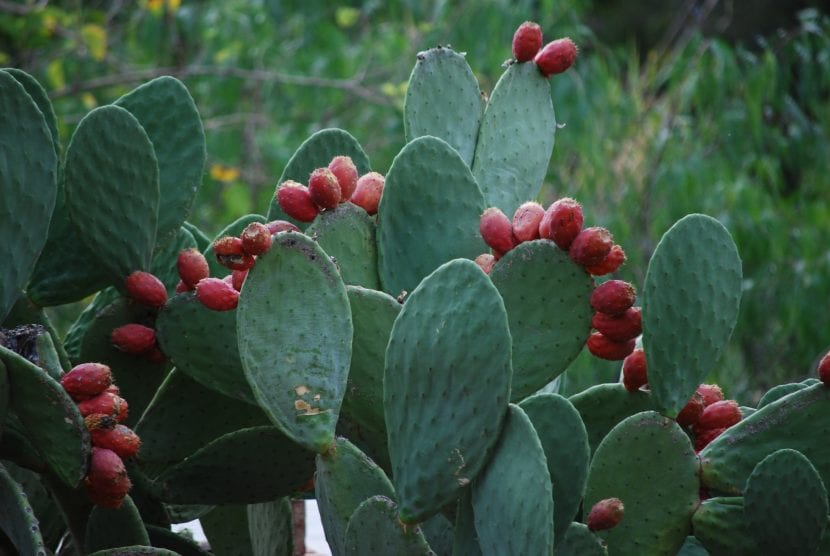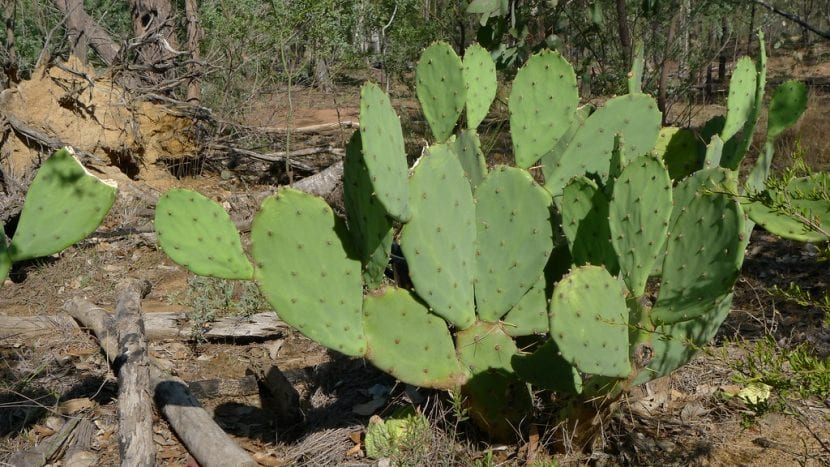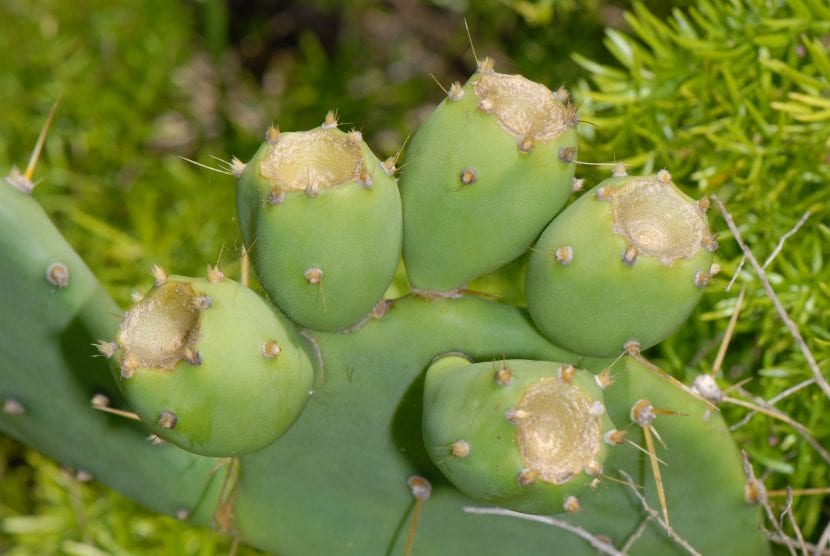
Image - Wikimedia / Peripitus
The cacti known as nopales are very fast growing plants that, depending on the species, produce fruits that are really delicious. However, as they adapt so well to various habitats, today there are some that are considered invasive, and one of them is the Opuntia dillenii, now known as Strict opuntia.
This is a species that, seen with the naked eye, is very reminiscent of the also invasive Opuntia ficus-indica. Its stalks (modified leaves) are more or less flat, bluish-green, and once ripe the fruits are red-pink. But, What else is there to know about her? Can it be cultivated?
Origin and characteristics

Image - Flickr / John Tann
The now Strict opuntia It is a native species of the United States, Mexico and Cuba, known by the common name of the coastal cactus from Las Tunas. It can reach a height of 1 to 3 meters, with a very branched shrubby and creeping bearing. The stalks or leaves are large, up to 30cm long by up to 15cm wide, ovate to ovulated and flattened, with widely separated brown areoles, from which one or more yellowish spines sprout.
It produces solitary yellow to yellowish-orange flowers with a size of about 5 cm long during spring-summer, and fructifies towards the beginning of autumn. Its fruits are purple-red when ripe, have an inverted egg shape, are about 3-4cm long and contain 60 to 180 seeds. protected by a mucilage also suitable for human consumption and with which birds and other animals enjoy. These seeds can remain viable for more than 10 years, until the appropriate conditions are met for their germination.
It is included in the Spanish Catalog of Invasive Alien Species approved by Royal Decree 630/213 of August 2, being prohibited the introduction to the natural environment, possession, transport, traffic and trade throughout Spain.
Does it have any use?
In the places of origin, the fruits are used for consumption, but in addition to the interior of the leaves, a mucilage is extracted that is used to treat burns and abscesses.
Why is Opuntia dillenii?

Image - Wikimedia / uleli
It is a very fast growing cactus that was introduced to Europe in the 1874th century by the conquerors of the Americas. In Spain it is known that it has been around since XNUMX, the year it was in the south of the Iberian Peninsula, specifically in the provinces of Huelva and Almería. From then until today, has managed to naturalize in Andalusia, growing in bushes, hedges and in arid climate regions.
In the Doñana National Park, it is preventing an autochthonous species, the Monosperm broomMay I prosper (you have more information on this topic here). If we talk about what is happening in other parts of the world, in Sri Lanka, China, Australia, New Zealand and South Africa, among other places, it has been identified as invasive.
Therefore, seeing what is already happening in Spanish territory and in other countries, and knowing that it multiplies without problems both from seeds and asexually with the leaves that are shed, every time you see one in nature, the best thing to do is to tear it off.
What control measures are being carried out?

Image - Flickr / Craig Hunter
Apart from starting them manually, in Australia its population is being controlled thanks to the lepidoptera Cactoblastis cactorum, but the introduction of this insect to places where the Strict opuntia is endemic, as in Mexico, negatively affects both this and other species of Opuntia, cactus from which different products are extracted for sale.
And it is that, of course, we cannot forget that if a plant or animal is introduced to a new place with conditions that are favorable to them, it is normal that it does not find predators, so it is expected that it will multiply and that its population grow quickly, occupying a land that does not correspond to him, but to the native species; that is, those that have been in existence for many years (hundreds, thousands), adapting to that habitat.
There are cacti that are very beautiful and that could, in principle, be of great use to us. The species I have told you about is one of them. In fact, if it were not invasive, I would tell you that it could become excellent as a low protection hedge because of the thorns it has, but I would be making a mistake if I now told you what its care is or where to buy. Always, always protect nature, the forests, the bushes, the beaches, everything, otherwise a not very promising future could await us.
If you like Opuntia, there are many that you can have, such as Opuntia microdasys or the opuntia littoralis, and even the Opuntia ficus indica that, although it is also invasive, its possession in gardens is allowed.
I hope it has been useful to you.